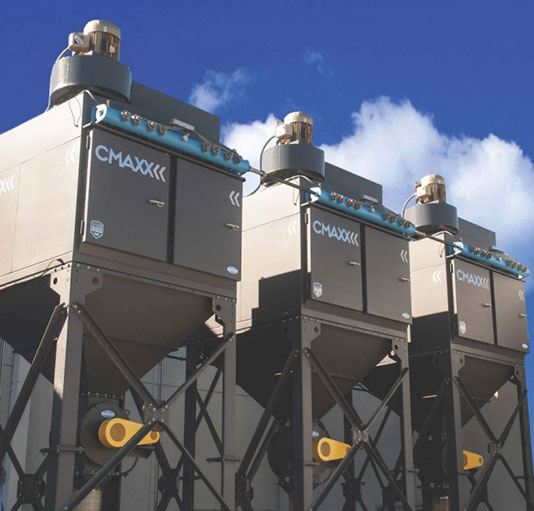Companies hold responsibility for their air pollution control and management. The EPA lists its “Big Six” air pollutants. Above all, the two of these that concern our customers the most are lead and other particulate matter. This can include many kinds of industrial air pollution. The EPA certainly enforces limitations on these.
In addition to the EPA, many companies are hit with negative publicity when news sources call them out as major polluters. For example, these companies in Pittsburgh have been accused of failing to develop or maintain air pollution controls. To make things worse, the report lists the proximity of the companies to local schools. Thus, it highlights that they are endangering children.
No company wants to be in violation of the EPA’s Air Pollution Control Act. You also don’t want the bad name and harmful attention that comes with being named as a major pollution source. So how do we control air pollution? Let’s focus on dust emissions.
Dust Collection for Control of Air Pollution
A dust collection system can help manage air pollution, especially the release of lead and other particulates. The EPA recognizes two types of particles: PM10 and PM2.5.
Particulates rated as PM10 measure around 10 microns or smaller. Meanwhile, PM2.5 particles are the most dangerous. They are 2.5 microns or smaller. The lungs will deeply inhale these. Many industries produce particles this small. So they all need strategies to curb industrial emissions.
Welding and plasma cutting are common processes. For most metalworking applications, a dust collector with DeltaMAXX NanoFiber filters will provide control for air pollution. This is important whether you circulate the air back into the facility or release it outside.

Nanofiber material is efficient down to 0.3 microns. This much smaller than the EPA’s 2.5 micron size range. If your application is producing dust that isn’t especially toxic, this type of air filtration should be sufficient.
Some materials, however, are more toxic and might need an additional level of filtering. For these applications, add HEPA filters after the main filters to increase efficiency. HEPA filters can be up to 99.99% efficient. “Clean rooms” that must be completely dust and germ-free often use them.
Materials that create a serious health hazard include hexavalent chromium. This dangerous chemical is produced from working on stainless steel or chrome-plated metal. Lead, often the product of battery manufacturing is a major hazard. Beryllium, the subject of new OSHA regulations, causes fatal lung disease.
Occupational and Environmental Agencies
Most companies are aware of OSHA and EPA regulations. They are regulatory agencies and can both issue fines for noncompliance. However, they regulate different things. So you can be compliant with one and not the other.
OSHA regulates occupational hazards or ones that happen during work. They would be concerned with air pollution management and control in the workplace. This might be silica exposure on a construction site or metal fumes from a cutting table.
The EPA regulates environmental hazards. These are exposures that could harm people and the environment. Not all of them come from industrial air pollution. Many states, especially California and several states in New England, have adopted standards much stricter than the EPA’s rules. In California, the San Joaquin Valley Air Pollution Control District, Placer County Air Pollution Control District, San Diego Air Pollution Control District, and Ventura County Air Pollution Control District outline their tough standards on their websites.
In 2012, the Association of Air Pollution Control Agencies was formed. Its purpose is to create a technical forum where ideas, information, and best practices could be shared among state air quality agencies. You can visit this website for more information about the EPA in your own state.
OSHA measures limits for indoor industrial air pollution as a time-weighted exposure. This means that the limit considers the exposure an employee has over a specific time. The EPA usually measures air pollution in parts per million. In other words, the number of dangerous particles in the air.
Let’s Do Our Part
We need to clean up dirty air by reducing air pollution from many places. Industries are one major source of air pollution, but power plants, large forest fires, and heavy car traffic are other important sources.
Clean air inside and outside your facility isn’t just a way to avoid fines. It’s every company’s responsibility from its workers, their neighbors, and the world around us.


